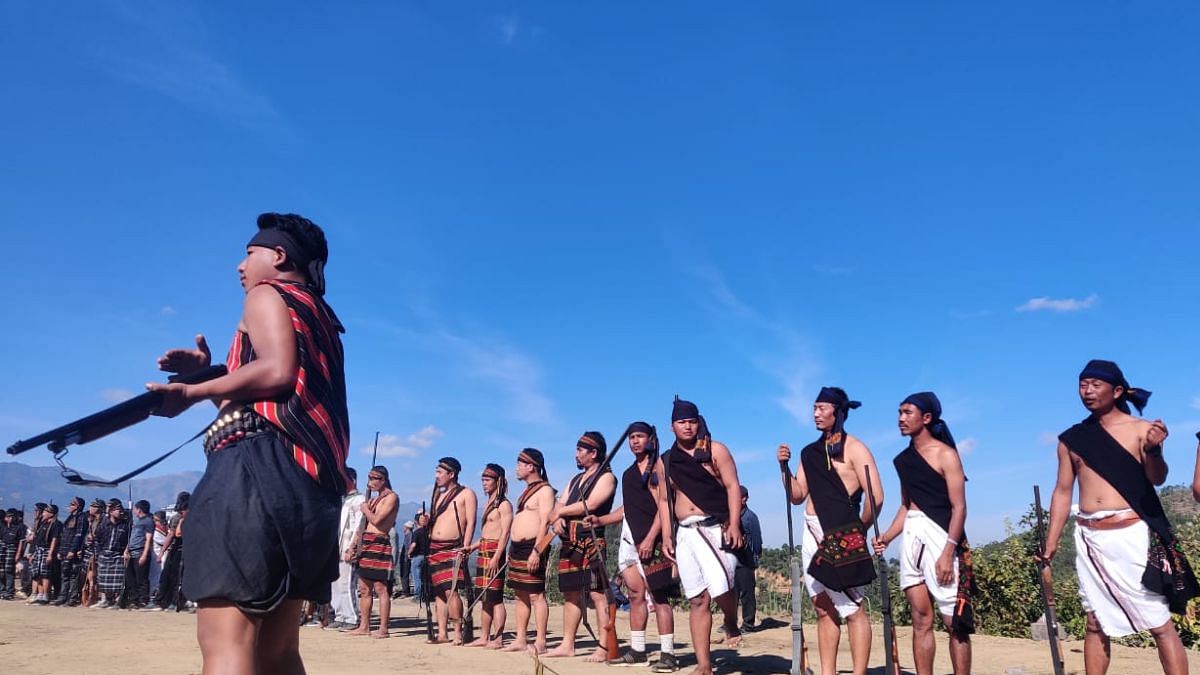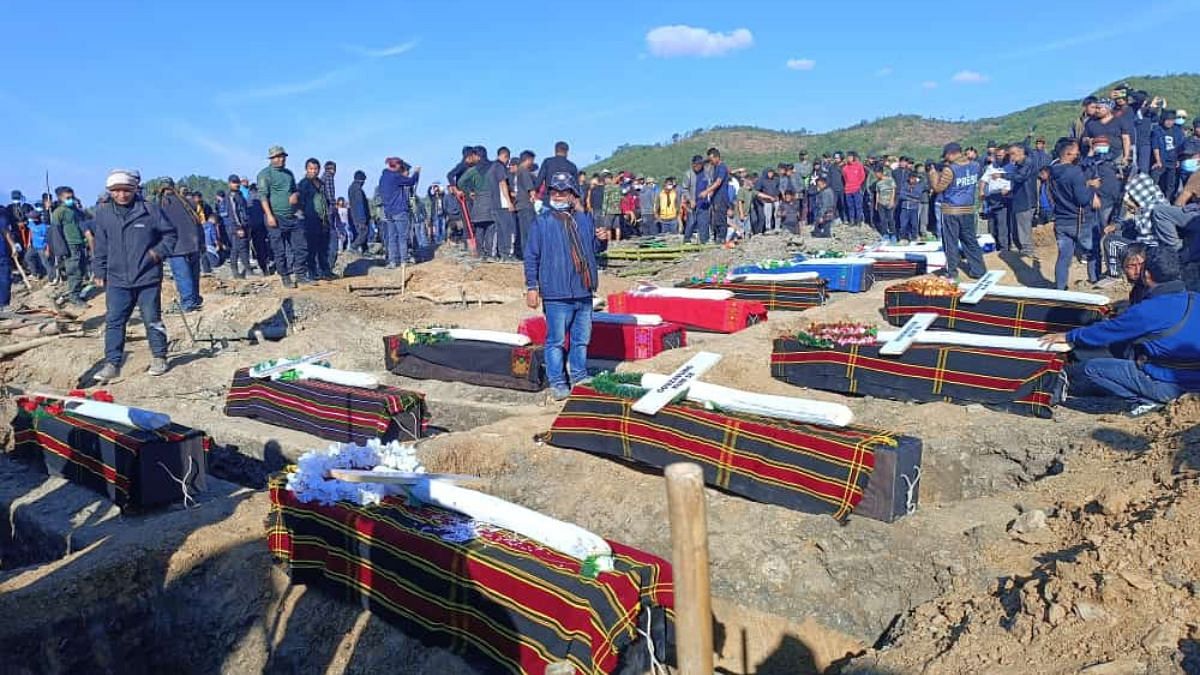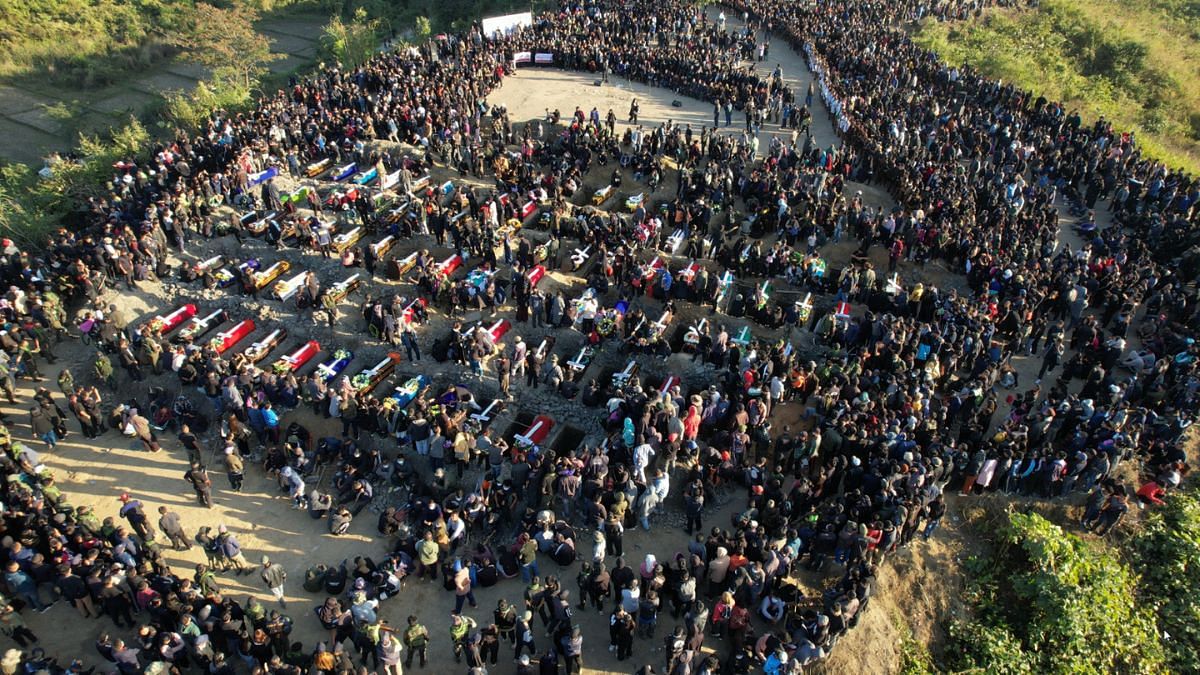The Supreme Court on 28 November had ordered an end to an impasse over the bodies of those killed in the Manipur violence, fixing a deadline for families to either accept the identified corpses that have not been claimed yet or let the state perform their last rites in line with their religion.
“It is exactly after seven months and 17 days that my brother has been given a burial. It has brought us much relief, but we cannot get over the grief ever,” said Helamboi Baite, the younger sister of 38-year-old Jamkhogin Baite, an ex-serviceman of the Indian Army who died on 3 May.
His body had remained at the Churachandpur (Lamka) district hospital morgue since.
“We were at the cemetery till sunset. It was difficult for all present to control their tears. People were wailing, every family member…Yes, they are sad, but some are happy to finally get closure,” said Helamboi. Baite’s family hails from Torbung village of Churanchandpur.
An elderly local who did not wish to be named said, “I am blank… I just have tears and a lump in my throat thinking about it all.”
Wednesday’s funeral ceremony was also attended by members of the Central Young Mizo Association (YMA), from neighbouring Mizoram, led by its president Lalhmachhuana. Mizoram Chief Minister Lalduhoma, too took to social media late Wednesday evening to offer his condolences.
Ethnic clashes between Manipur’s tribal Kuki-Zo and non-tribal Meitei communities erupted on 3 May, following a ‘Tribal Solidarity March’ taken out to oppose the demand for inclusion of Meiteis in the Scheduled Tribe (ST) category, and for what was described as an effort to secure the rights and constitutional safeguards of the ethnic Kuki and their sub-tribes.
The state is divided into hill and valley districts, with the former dominated by Kuki and other tribes, while the valley is dominated by the non-tribal Meiteis.
Also read: As 19 Kuki-Zo victims of Manipur strife laid to rest, principal mourns Class 1 student — ‘inhuman act’
‘Heard of his death through social media’
Earlier on 4 May, Helamboi had spoken with ThePrint, stating that the family had decided not to claim the body unless the government conceded to the demands raised by the tribal leaders — among them, a mass burial for all victims in their native land.
Jamkhogin had joined the Tribal Solidarity rally on 3 May, and had stepped out of his house in the evening after hearing of clashes in the area. His sister said he had not carried the phone with him, and it was past midnight that they “heard of his death through social media”.
The former serviceman had taken voluntary retirement from the Indian Army in October last year. He was father to four children, the youngest being five months old at the time of his death.
The burial ceremony that took place at 2:30pm Wednesday was preceded by a farewell service at the Peace Ground in the Tuibong area, which was attended by hundreds.
Earlier in the day, volunteers from different organisations had prepared the burial site, cutting into the rocky ground with pickaxes, and refusing to use machines — as a show of respect for the deceased.

As crosses were laid on the coffins resting close to each other, the Kuki-Zo volunteers accorded a traditional gun salute for the “martyrs”. While most bodies were laid to rest in accordance with Christian customs, a Messianic ritual was performed for three victims, in keeping with their faith. Jewish rituals were conducted for one deceased who followed Judaism, the ITLF stated in its statement.
Remains of 13 victims ‘missing’
As violence continued through the summer months, bodies were brought into the mortuaries of the Regional Institute of Medical Sciences (RIMS) and the Jawaharlal Nehru Institute of Medical Sciences (JNIMS) in Imphal, and were later identified by families and relatives.
On 14 December, the mortal remains of 41 victims were airlifted from the mortuaries in Imphal to their hometown in Churachandpur. The remains of the Churachandpur victims were then kept at the mortuary of the district hospital there, along with 46 other bodies that had been lying there, even as families awaited a burial.
All 87 have now been laid to rest at the ‘Kuki-Zo Martyrs’ Cemetery’, five days after the funeral ceremony of 19 other victims in Kangpokpi district.
Of the “160 deaths from the Kuki-Zo community”, as cited by the ITLF, the remains of 13 people are said to be missing.
‘Christmas won’t be the same’
Meanwhile, Helamboi said no family would celebrate Christmas in the hills of Manipur this year, the way they used to.

“The violence continues. In this environment, nobody can celebrate Christmas, or any other festival like before. It won’t be the same for us. Maybe, families would have a somber celebration inside their homes, but I don’t think any gathering will take place in the streets,” she said.
“We have separated already from the Meitei community, the valley people. It now depends on the Central Government to take action and work out a solution, speak out for the Kuki people. We are running out of patience,” added Helamboi.
(Edited by Poulomi Banerjee)
Also read: ‘What about our future?’ Kuki medical students barred from university exam protest 75% attendance rule

